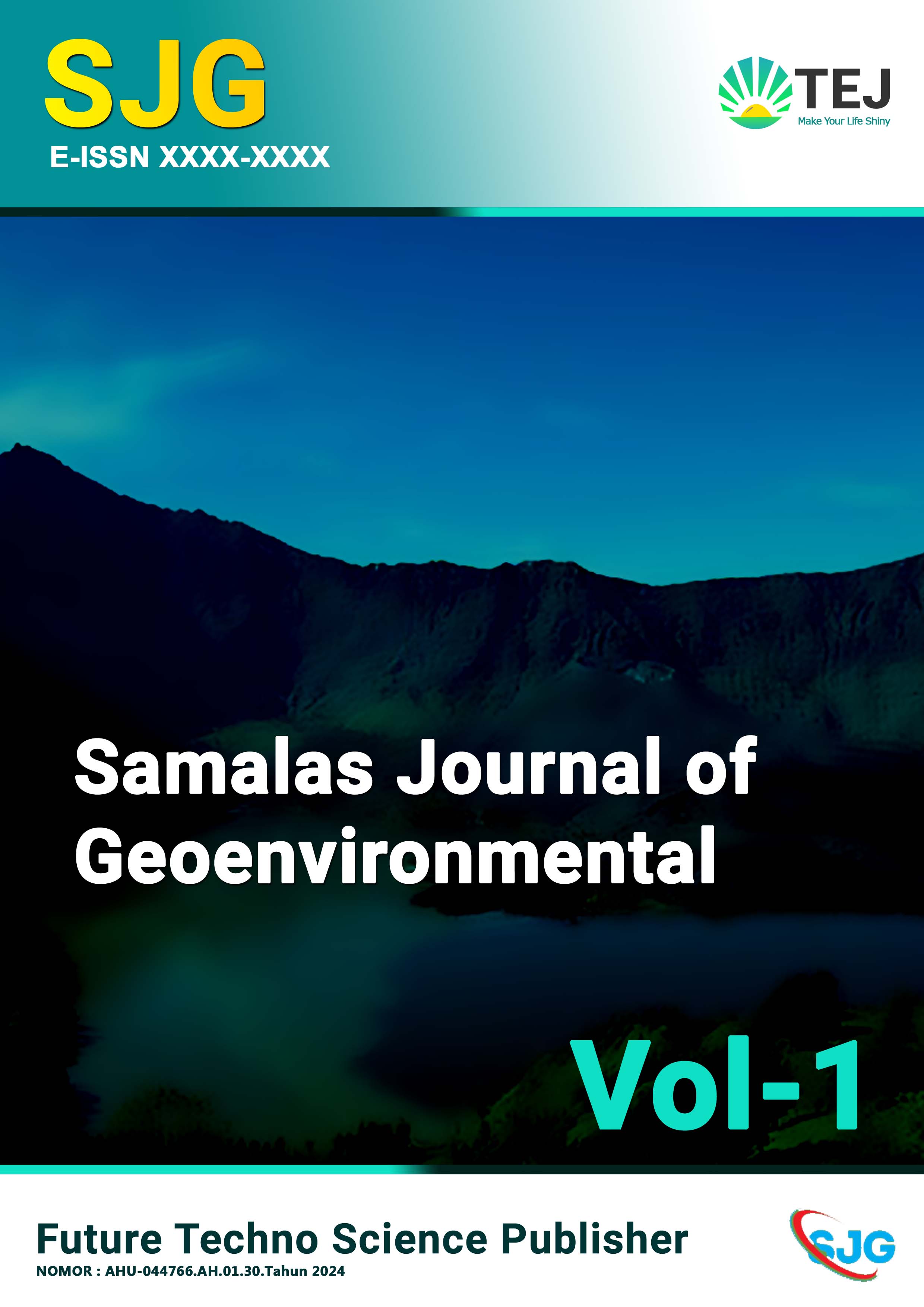Identification of Pumice Deposits from the Samalas Eruption Based on Geoelectrical and Borehole Data in the Tanjung Area, North Lombok Regency
DOI:
https://doi.org/10.59535/4f83f492Keywords:
Drill, Eruption, Geoelectric, Mount Samalas, PumiceAbstract
Mount Samalas is part of Rinjani Volcano, which erupted in 1257 AD. This eruption was one of the largest volcanic eruptions ever. This eruption left deposits in the form of pumice that reached tens of kilometers. The results of the eruption can be used as an object of research and important knowledge related to traces of volcanic activity in the past. This study aims to analyze the subsurface lithology suspected to be rock deposits from the eruption of Mount Samalas in the Tanjung area of North Lombok Regency. The method used is the drilling technique, and in each location where the drill data is taken, geoelectric measurements are carried out, There are 6 geoelectric trajectories with a track length of 69 meters. The results showed that the constituent rocks of the Tanjung Region consisted of top soil, silt, pumice, sandstone, clay, and black sand. Then, in the research area, a layer of pumice from the eruption of Mount Samalas was found at a depth of 1–5 meters with a thickness of 1–2 meters.
Downloads
Published
Issue
Section
License
Copyright (c) 2025 Mega Mustika Lauhil Bahriya, Syamsuddin, Suhayat Minardi (Author)

This work is licensed under a Creative Commons Attribution 4.0 International License.






